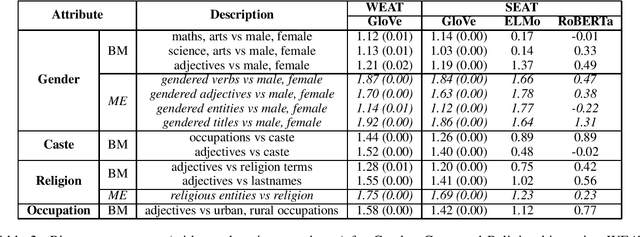Socially Aware Bias Measurements for Hindi Language Representations
Paper and Code
Oct 15, 2021



Language representations are an efficient tool used across NLP, but they are strife with encoded societal biases. These biases are studied extensively, but with a primary focus on English language representations and biases common in the context of Western society. In this work, we investigate the biases present in Hindi language representations such as caste and religion associated biases. We demonstrate how biases are unique to specific language representations based on the history and culture of the region they are widely spoken in, and also how the same societal bias (such as binary gender associated biases) when investigated across languages is encoded by different words and text spans. With this work, we emphasize on the necessity of social-awareness along with linguistic and grammatical artefacts when modeling language representations, in order to understand the biases encoded.
 Add to Chrome
Add to Chrome Add to Firefox
Add to Firefox Add to Edge
Add to Edge